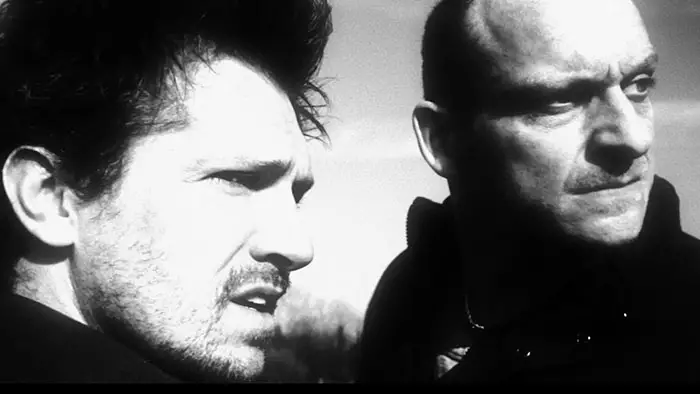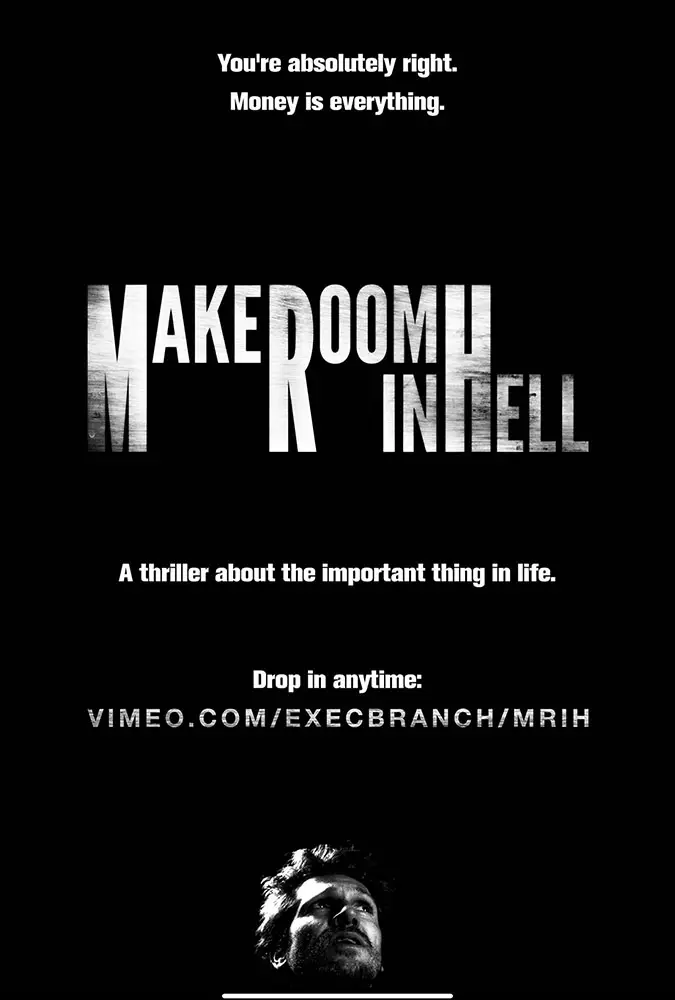
Mathew J. Keats’ Make Room in Hell is an engaging and often confounding neo-noir. To call it simply a crime drama or a psychological thriller does little to encapsulate the boggling experience of watching this messy, genre-bending effort.
Make Room in Hell tells the story of Gordon Burn, a down on his luck shlub who falls a*s-backward into what seems like the perfect heist. But wouldn’t you know it, things take a dark turn when he involves his friend, Kevin, and an unhinged gangster, O’Grady, as muscle for the job. Many of the beats of this Brit-crime drama are familiar, and it wears its influences—from the brash early films of Guy Ritchie to the striking similarities between O’Grady and Ben Kingsly’s psychotic heavy in Sexy Beast—on its sleeve. Despite many of its recycled elements, Keats capably imitates the acerbic dialogue and stylish grubbiness of those cinematic tent poles, while also bringing in decidedly Keatsian touches.

“…stylized world with the photograph of a young child, grinning from ear to ear but underscored by an ominous soundscape…”
Make Room in Hell is not lacking for style. High contrast black and white photography, a pulsing score evoking John Carpenter’s early horror/sci-fi work, and a brooding gritty aesthetic with a dark tone to spare forcefully announce the film’s presence. That Keats seems unsatisfied simply telling the story he initially presents is bold and unexpected but also the source of many of the issues the film ultimately suffers from.
We are ushered into this stylized world with the photograph of a young child, grinning from ear to ear but underscored by an ominous soundscape, instantly putting us ill at ease. Then, a voice-over augmented to sound almost demonic, drones: “You have to know I did it for you, son.” This inhuman voice belongs to Gordon, a man we next see in distorted camcorder footage begging for gas money on the street. This stark contrast is immediately unsettling because while the voice-over identifies with this man, his demeanor appears pointedly different from what we hear. At first, this subversion of the trope of hardboiled non-diegetic commentary, paired with the surrealist, formal flourishes is enigmatic and intriguing. Even if the two tones don’t exactly gel, the film provides enough good faith to feel that even if we don’t yet understand their relation, the filmmakers certainly do. As the film progresses into a fairly straightforward caper-gone-awry story, however, scenes punctuated by the distorted VO are increasingly at odds with what we see unfolding before our eyes to the point of utter confusion.

"…not lacking for style. High contrast black and white photography, a pulsing score..."
